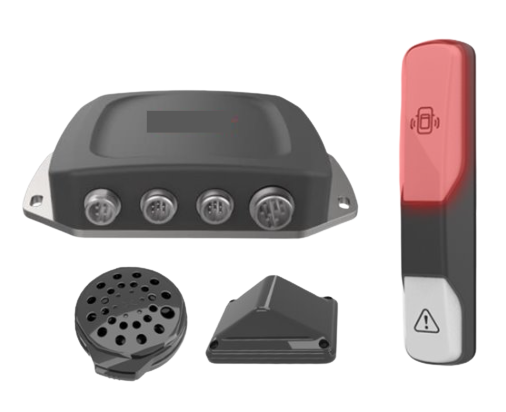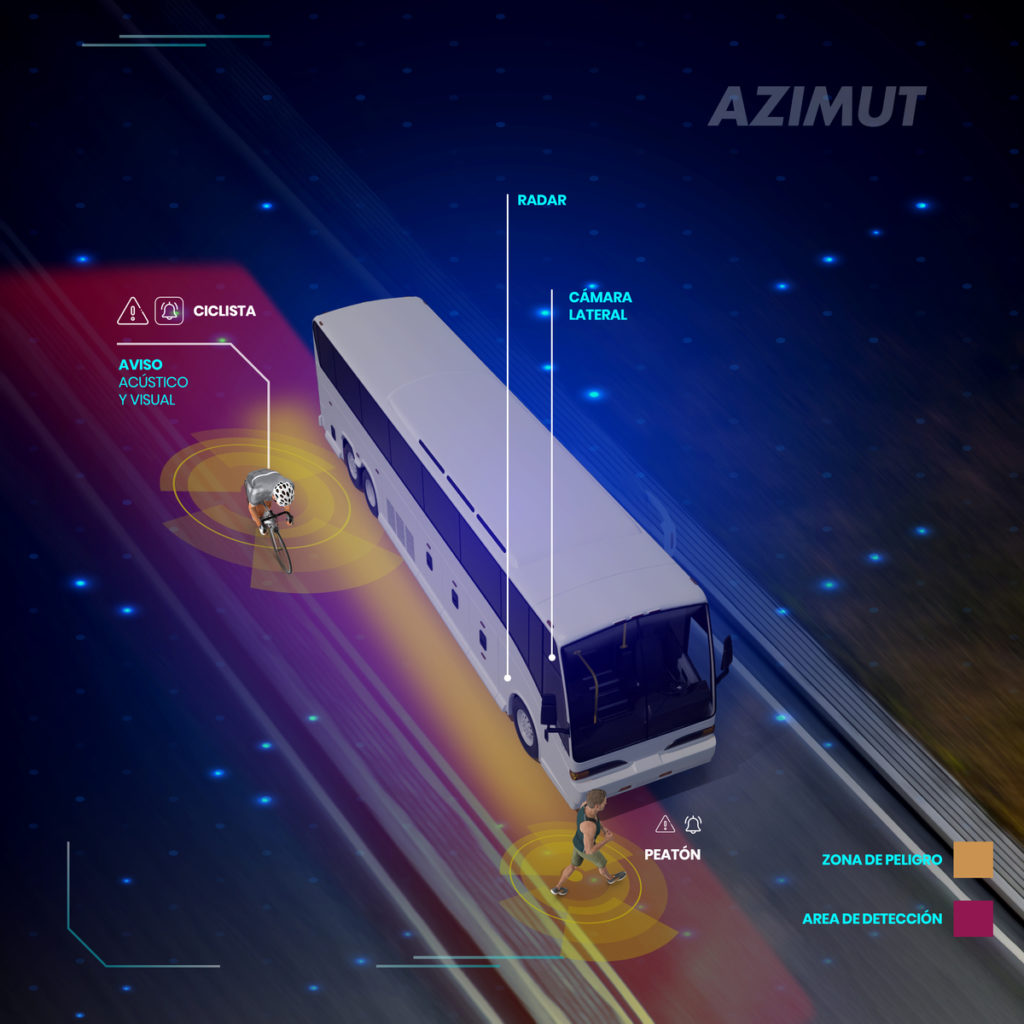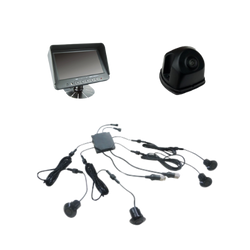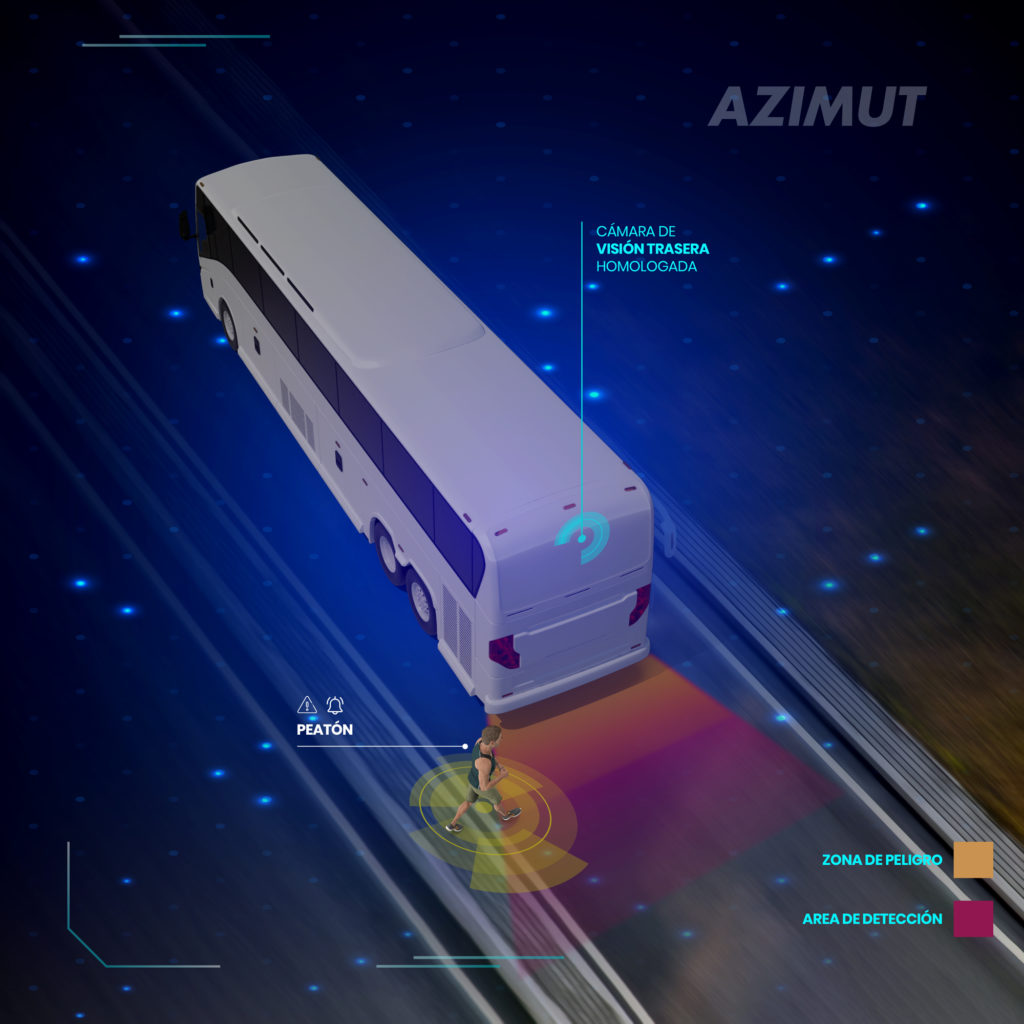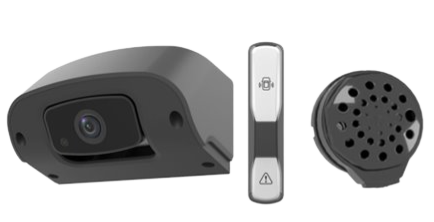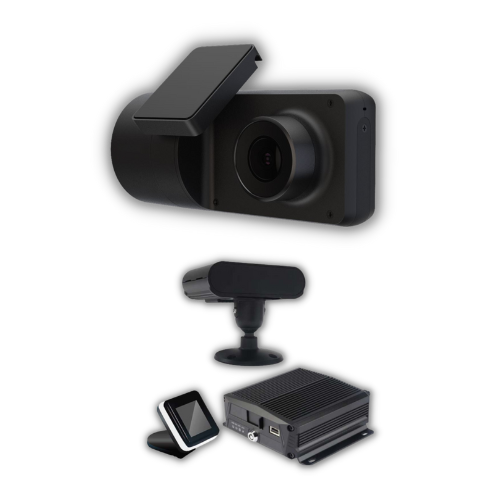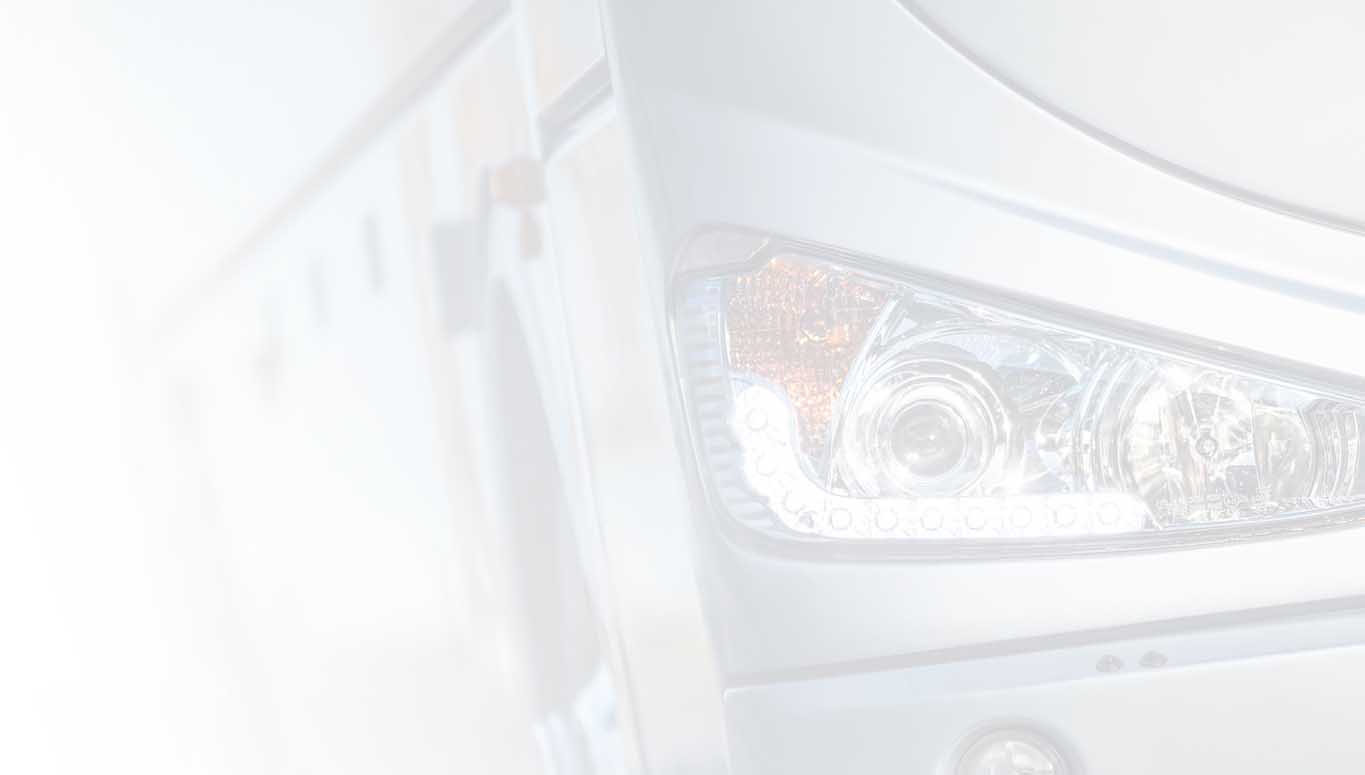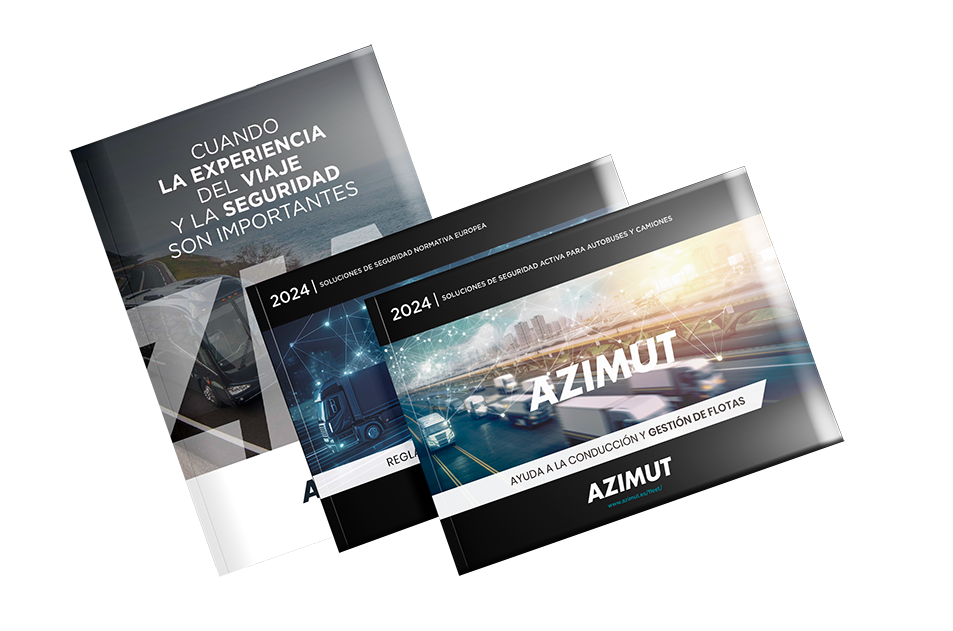Innovación al servicio de la seguridad en carretera: cámara marcha atrás y otros dispositivos inteligentes
Las nuevas tecnologías están contribuyendo a incrementar la seguridad vial. Un claro ejemplo de ello es la cámara marcha atrás que puede verse en un número creciente de transportes de mercancías y pasajeros. A esto se une que la Unión Europea ha publicado cuatro reglamentos que buscan combatir la siniestralidad. ¿Qué aspectos regulan? ¿Qué medidas hay que tomar para cumplirlos? Te lo contamos con todo detalle en este artículo.
Reglamentos europeos para incrementar la seguridad en carretera
La UE ha publicado cuatro normativas de obligado cumplimiento. Tres han sido elaboradas por las Naciones Unidas y una por la Comisión Europea. En su conjunto, regulan el uso de sistemas tecnológicos para proteger a ciclistas y peatones en terreno europeo y, a su vez, pretenden minimizar los riesgos derivados de la fatiga del conductor. En este sentido, sus implicaciones repercuten, principalmente, en las empresas de transporte y logística. Ahora bien, ¿qué medidas obligatorias establecen? Las resumimos a continuación:
Normativa Europea R151
Contempla disposiciones uniformes relativas a la homologación de vehículos de motor en lo que respecta al sistema de aviso de ángulos muertos para la detección de bicicletas. Para cumplirla, existen dispositivos que incluyen un radar con indicación visual y auditiva que facilita la detección de dichos puntos.
Solución recomendada:
Normativa Europea R158
Trata la homologación de los dispositivos de desplazamiento en marcha atrás, así como los avisos de presencia de las personas vulnerables que se encuentran detrás del transporte en la carretera. Te recomendamos que, en este caso, instales un kit compuesto de cámara, monitor y sensores ultrasónicos que permitan visualizar los ángulos muertos y emitan una señal visual y otra acústica. Gracias a estos dispositivos, el conductor sabrá si hay viandantes vulnerables en puntos ciegos.
Solución recomendada:
Normativa Europea R159
Esta norma considera medidas de homologación relativas al sistema de información al inicio de la marcha para evitar daños a peatones y ciclistas. La solución para respetar este reglamento es instalar un kit para avisar de la presencia de usuarios vulnerables. De este modo, el ángulo muerto de los peatones y ciclistas queda advertido al conductor.
Solución recomendada:
Reglamento 2021/1341
Por último, este reglamento establece sistemas de advertencia de somnolencia y pérdida de atención del conductor. Para seguir sus requerimientos, contar con un sistema de detección de fatiga con reconocimiento facial resulta fundamental para identificar comportamientos relacionados con el cansancio, la somnolencia y la distracción. No en vano, el dispositivo emite una señal visual y otra acústica cuando observa que el conducir pierde la atención por cualquiera de estos motivos.
Solución recomendada:
¿Qué vehículos han de cumplir con estas normativas?
Actualmente, su aplicación no es obligatoria para los que ya se encuentran en circulación y tampoco para los Aftermarket. Sin embargo, sí que lo es para los siguientes:
- Nueva homologación: desde julio de 2022.
- De primera matriculación, a partir de julio de 2024.
Cámara marcha atrás y otros productos se pueden instalar
Por todo lo anterior, muchas empresas que desarrollan su actividad en el ámbito del transporte de pasajeros y mercancías ya están poniéndose manos a la obra. Cumplir con las especificaciones marcadas no es solo cuestión de legalidad, sino de comodidad y seguridad para las personas.
En ese sentido, la transformación digital y las nuevas tecnologías han hecho posible el autobús inteligente conectado, un modelo cada vez más presente en nuestras carreteras. Estos vehículos disponen de visibilidad en tiempo real, integración y colaboración con aplicaciones propias y de terceros y una conducción controlada. Además, con este tipo de avances, tienes la posibilidad de realizar un seguimiento con acceso a una sola plataforma.
Actualmente, estos sistemas de seguridad activa son aplicaciones y dispositivos con excelentes prestaciones. Si quieres minimizar los peligros en carretera, no dudes en incorporar las siguientes innovaciones en tu flota:
- Sistema de visión 360 grados.
- Wifi con tecnología M2M para pasajeros.
- Cámara de visión frontal para la detección de usuarios vulnerables.
- Mirror cam. Retrovisor digital.
- Sistema de asistencia avanzada a la conducción.
- Sistema de monitorización de eventos de seguridad.
- Sistema de gestión de flotas telemática.
- Contador automático de pasajeros.
- Radar para avisar de usuarios vulnerables.
- Monitor en tiempo real.
- Sistema de entretenimiento abordo.
- USB. Sistema de energía abordo.
- Sistema de ángulo muerto.
- CCTV. Sistema de seguridad con cámaras embarcadas.
- Cámara de visión trasera para ubicar usuarios en situación de riesgo.
¿Qué ventajas proporciona el uso de estos dispositivos?
Instalar sistemas de seguridad activa puede reducir en un 90 % el riesgo de accidentes. Así, la digitalización de las flotas tiene múltiples beneficios:
- Incrementa la seguridad y salva vidas.
- Mejora la experiencia del cliente.
- Controla el servicio que presta el vehículo en tiempo real.
- Monitoriza la flota e identifica a los conductores.
- Se integra con otras soluciones.
- Ofrece datos de navegación para elaborar informes.
Además, contribuye a reducir los siguientes indicadores:
- El número de accidentes en más de un 50 %.
- Los excesos de velocidad.
- Los costes operativos.
- El gasto de combustible entre un 3 % y un 7 %.
- Los gastos de mantenimiento en más de un 20 %.
Innovación para garantizar el confort y la prevención de riesgos
Estos novedosos dispositivos, como la cámara de detección de ciclistas o la cámara de detección de peatones, están contribuyendo a mejorar el bienestar general y la seguridad vial. Si eres gerente de una empresa de transportes, sabrás lo importante que resulta la integridad de los trabajadores y usuarios.
Por ello, aplicar las oportunidades que brindan las tecnologías es crucial para mejorar el servicio que prestas y la experiencia del cliente. El hecho de que estos reglamentos sean de aplicación obligatoria o vayan a serlo en un futuro próximo es solo un paso más hacia ese objetivo.
En definitiva, las normativas europeas implantan directrices alineadas con los valores de las empresas de transporte. Estas, por su parte, buscan optimizar su gestión y proporcionar un servicio de máxima calidad, para lo cual cuentan con los avances tecnológicos como aliados. Si deseas más información sobre soluciones de este tipo, como la cámara marcha atrás, ponte en contacto con nosotros. ¡Te ayudaremos a mejorar la seguridad y la eficacia de tu flota de transporte!
